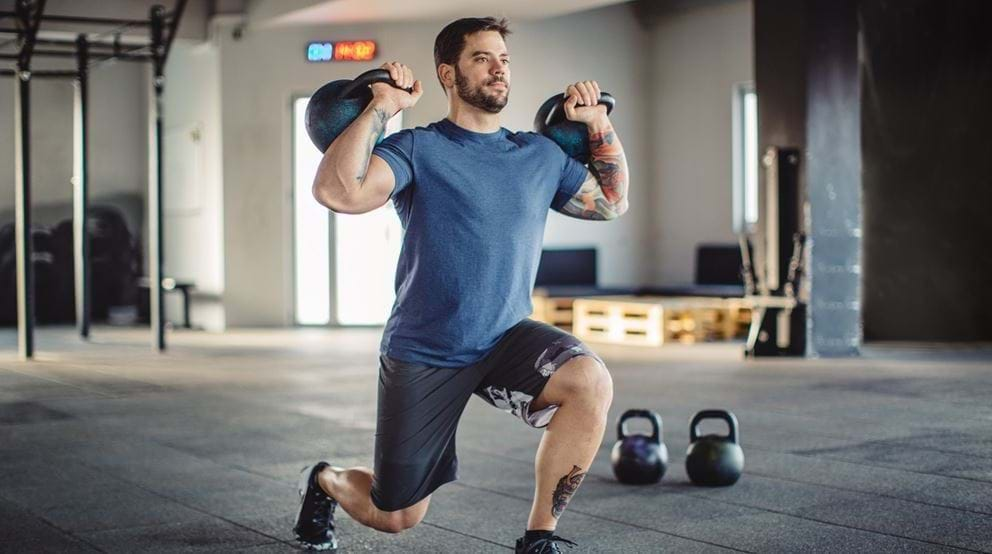Pulse of Information
Your source for the latest insights and updates.
Sweat, Smile, Repeat: The HIIT Revolution
Unleash your inner athlete! Dive into the HIIT revolution and transform sweat into smiles. Join us for tips, workouts, and motivation!
What is HIIT and How Does It Transform Your Fitness Journey?
HIIT, or High-Intensity Interval Training, is a workout strategy that alternates between periods of intense effort and lower-intensity recovery. This training method not only maximizes calorie burning during workouts but also boosts metabolic rate post-exercise, allowing for increased fat loss over time. By engaging in short bursts of high-energy activities like sprinting, cycling, or body-weight exercises followed by brief rest periods, HIIT can deliver significant results in a shorter time frame compared to traditional steady-state cardio.
Incorporating HIIT into your fitness journey can lead to transformative results, improving both cardiovascular health and muscular endurance. This versatile training style can be easily adapted to various fitness levels, making it suitable for beginners and seasoned athletes alike. The following benefits can enhance your overall fitness experience:
- Increased calorie burn
- Improved aerobic and anaerobic fitness
- Time-efficient workouts
- Enhanced athletic performance
Ultimately, embracing HIIT can not only transform your body but also keep your workouts engaging and effective.

5 Must-Try HIIT Workouts for Every Fitness Level
High-Intensity Interval Training (HIIT) is a fantastic way to boost your fitness level, and the best part is that it can be tailored for every fitness level. Whether you are a beginner or an advanced athlete, incorporating HIIT workouts into your routine can lead to significant improvements in strength, endurance, and fat loss. Here are 5 must-try HIIT workouts that cater to different fitness levels:
- Beginner's Bodyweight HIIT: Start with simple exercises like squats, push-ups, and jumping jacks. Perform each exercise for 20 seconds, followed by 40 seconds of rest, and repeat for 15-20 minutes.
- Intermediate Circuit HIIT: Incorporate dumbbells or resistance bands with exercises such as lunges, burpees, and mountain climbers. Aim for 30 seconds of work followed by 30 seconds of rest, completing 3-4 rounds.
- Advanced Plyometric HIIT: Challenge yourself with high-intensity moves like box jumps, kettlebell swings, and tuck jumps. Use a 40/20 work-to-rest ratio for 20-25 minutes to really push your limits.
- Tabata HIIT: A highly efficient format consisting of 20 seconds of maximal effort followed by 10 seconds of rest, repeated for 8 rounds. You can use different exercises for each Tabata set, such as sprints or push-up variations.
- Recovery HIIT: Perfect for all fitness levels, a recovery HIIT uses lower intensity exercises. Try walking lunges, glute bridges, and gentle jump roping for a more manageable yet effective workout.
Each of these HIIT workouts can be modified to suit your current abilities, making it easier to integrate into your routine. Remember to warm up and cool down appropriately to prevent injuries and maximize your results!
Debunking the Myths: The Real Benefits of High-Intensity Interval Training
High-Intensity Interval Training (HIIT) has often been surrounded by myths that can deter individuals from embracing its numerous benefits. One common misconception is that HIIT is only suitable for elite athletes. In reality, HIIT can be tailored to fit various fitness levels, making it accessible for beginners as well. This versatile workout approach not only boosts cardiovascular health but also promotes fat loss while preserving muscle mass, a dual benefit that traditional steady-state cardio often lacks.
Another myth is that HIIT workouts require lengthy sessions, leading many to believe they need to dedicate significant amounts of time to see results. This couldn't be further from the truth. Research indicates that even short sessions of HIIT, lasting just 15-30 minutes, can yield impressive results in improving fitness levels and metabolic health. Thus, HIIT is an effective strategy for those with busy schedules who seek to maximize their workout efficiency without sacrificing results.